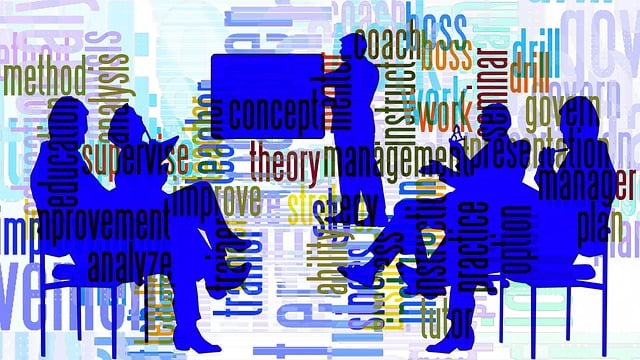The 5S Methodology, rooted in Japanese lean production, transforms chaotic industrial settings into streamlined operations through five key disciplines: sorting, setting in order, shining (cleaning), standardizing, and sustaining. This approach enhances productivity, improves quality control, and fosters a culture of continuous improvement by reducing waste and optimizing each housekeeping step. Integrating 5S training with lean management principles drives maximum efficiency, employee morale, and overall workplace organization.
Industrial housekeeping is a critical yet often overlooked aspect of operational efficiency. This comprehensive guide delves into the transformative power of the 5S methodology—a foundational practice that revolutionizes workplace organization. We explore how integrating lean management principles and implementing effective organizational techniques unlock unprecedented productivity gains. By focusing on continuous improvement through process standardization, facilities can achieve optimal performance, ensuring a clean, safe, and streamlined environment. Discover the key to enhancing productivity with 5S training and process standardization.
- Understanding the 5S Methodology: A Foundation for Industrial Housekeeping
- Integrating Lean Management Principles into Daily Practices
- Unlocking Efficiency: Workplace Organization Techniques
- Continuous Improvement Through Standardization of Processes
Understanding the 5S Methodology: A Foundation for Industrial Housekeeping

The 5S Methodology is a powerful framework that serves as a cornerstone for implementing effective industrial housekeeping and workplace organization practices. This lean management approach, deeply rooted in Japanese production systems, focuses on creating an organized, efficient, and safe work environment. The ‘5S’ stands for five key disciplines: Sort, Set in Order, Shine (or Clean), Standardize, and Sustain. Each step is crucial for transforming cluttered spaces into streamlined operations.
Sort involves identifying and eliminating unnecessary items, ensuring only essential tools and materials are present. Set in Order means organizing the remaining items logically, making them easily accessible. Shine emphasizes a clean and sanitary environment, which not only improves aesthetics but also reduces potential hazards. Standardize focuses on establishing consistent processes and procedures to maintain order. Finally, Sustain ensures these practices are embedded in the culture, fostering continuous improvement and preventing a return to disorganization. This systematic approach is vital for enhancing productivity, improving quality control, and creating a safer work environment through effective 5S training and process standardization.
Integrating Lean Management Principles into Daily Practices

Integrating Lean Management principles into daily practices is a powerful way to transform industrial housekeeping into an efficient, effective process. 5S training forms the foundation, encouraging workers to Sort, Set in order, Shine (clean), Standardize, and Sustain these practices consistently. This systematic approach cultivates a culture of workplace organization and continuous improvement, much like Lean Management promotes.
By adopting process standardization, each step of housekeeping becomes clearly defined and optimized. This reduces waste – whether that’s time, resources, or energy – and enhances overall productivity. 5S continuous improvement drives workers to constantly evaluate and refine their practices, ensuring the highest level of workplace organization and maintaining a safe, efficient environment for all.
Unlocking Efficiency: Workplace Organization Techniques

Unlocking efficiency in industrial settings requires a structured approach to workplace organization. This is where techniques like 5S training come into play, offering a powerful framework for enhancing productivity. The 5S method involves sorting, setting in order, shining (cleaning), standardizing, and sustaining—a continuous improvement process that fosters an organized and safe environment. By implementing this system, employees can quickly locate tools and materials, reducing waste and streamlining operations.
Lean management principles further complement these practices by emphasizing the elimination of unnecessary steps and resources. Process standardization ensures that tasks are performed consistently, minimizing errors and maximizing output. When combined with 5S training, lean techniques create a dynamic work environment where every element serves a purpose, leading to increased productivity, improved employee morale, and enhanced overall efficiency.
Continuous Improvement Through Standardization of Processes

In the realm of industrial housekeeping and workplace organization, continuous improvement is a cornerstone of success. One powerful method to achieve this is through the standardization of processes, often facilitated by 5S training and lean management principles. By implementing 5S—Sort, Set in Order, Shine (clean), Standardize, Sustain—organizations can create an environment that promotes efficiency and reduces waste. This involves systematically organizing spaces, tools, and tasks to ensure every employee works within a clearly defined system.
Process standardization, a key component of 5S continuous improvement, ensures consistency across operations. It allows for better training, improved quality control, and reduced errors. Lean management techniques further enhance this by identifying and eliminating non-value-added activities. This holistic approach fosters a culture of ongoing enhancement where every step in the process is scrutinized and optimized, ultimately leading to enhanced productivity, increased employee engagement, and better overall workplace organization.
By integrating the 5S methodology, lean management principles, efficient workplace organization techniques, and consistent process standardization, industrial facilities can significantly enhance productivity and create a safer, more organized environment. This comprehensive approach to housekeeping not only improves operational efficiency but also fosters a culture of continuous improvement, ensuring long-term success in today’s competitive manufacturing landscape. 5S training equips employees with the skills needed to maintain these practices, leading to sustained productivity gains and a better overall work experience.
